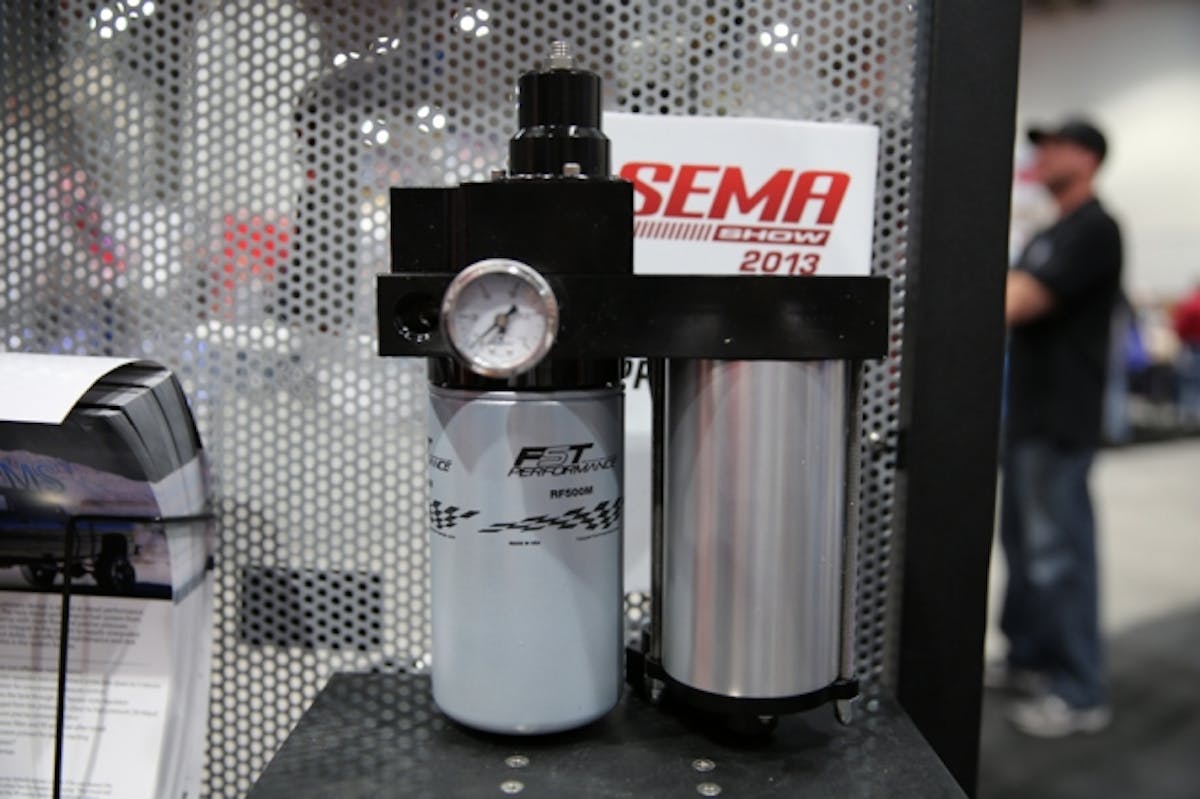 Next up, we stopped by Aeromotive to see what was new in the world of fuel. Aeromotive has been an industry leader in fuel systems since its inception. So, a few years ago they decided to take a closer look into the diesel marketplace and they started by first evaluating what’s out there and what was actually needed.
Next up, we stopped by Aeromotive to see what was new in the world of fuel. Aeromotive has been an industry leader in fuel systems since its inception. So, a few years ago they decided to take a closer look into the diesel marketplace and they started by first evaluating what’s out there and what was actually needed.
“At Aeromotive we don’t develop ‘me too’ products. We study markets, listen to consumers and this is the product we developed to address those issues,” says Jared Cox, Research and Development Guru at Aeromotive. When looking at the needs of the diesel market, they evaluated every aspect, from the high pressure fuel pumps on the older Fords to the lift pumps of today’s common rail engines. They knew their fuel pumps would work well with diesel, it was just a matter of putting together a complete system that fulfilled the needs of consumers.
 The new systems look similar to what is currently on the market, but they are quite different. The fuel pump is mounted vertically with a one way check valve to keep the fuel pump always primed. In many applications, the fuel pumps are mounted on the fuel rail, and the level of the pump could be higher than the fuel when the fuel tank gets low. So, having a check valve ensures that the pump is always ready to go.
The new systems look similar to what is currently on the market, but they are quite different. The fuel pump is mounted vertically with a one way check valve to keep the fuel pump always primed. In many applications, the fuel pumps are mounted on the fuel rail, and the level of the pump could be higher than the fuel when the fuel tank gets low. So, having a check valve ensures that the pump is always ready to go.
There are two optional pumps for these systems. The A1000 which can flow 100 GPH (Gallons Per Hour) or the Eliminator which flows 240 GPH. Both of these pumps are able to hold a steady fuel pressure even at wide open throttle – no need to have a plus or minus spec of 2 to 5 psi. If the fuel pressure is set to 12 psi, it will stay at 12 psi.
The main block of the unit is where some really cool features are housed. Aeromotive added cooling passages to run coolant through to heat the fuel in extreme cold climates. This will help to prevent “fuel gelling.” In addition to the coolant passages, there is a fail-safe valve on the outlet. If something does happen to the fuel pump, there is a bypass that opens upon negative pressure, to allow the injection pump to “pull” fuel from the tank. This could help to prevent taking out an injection pump in case of failure.
The design of the regulator helps to remove any air trapped in the fuel or system as it is the highest location in the unit. Mounted next to the fuel pump is a three micron fuel and water separator/filter rounding out the kit.
You might also like
Do You Know Where America's Diesel Trucks Are Assembled?
If you’re curious where your heavy-duty diesel truck was assembled (built), the answer takes you on a little road trip across North America.






